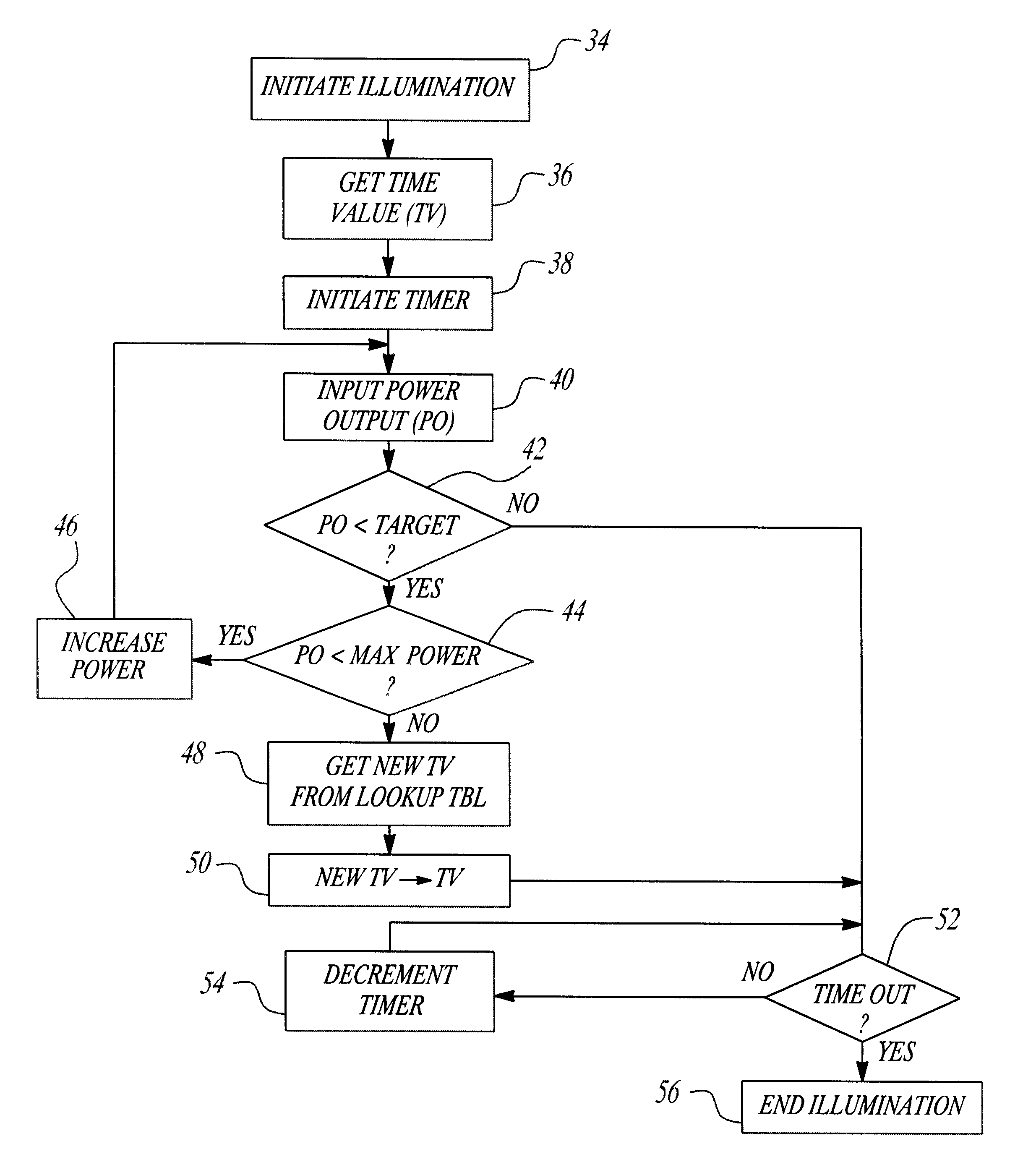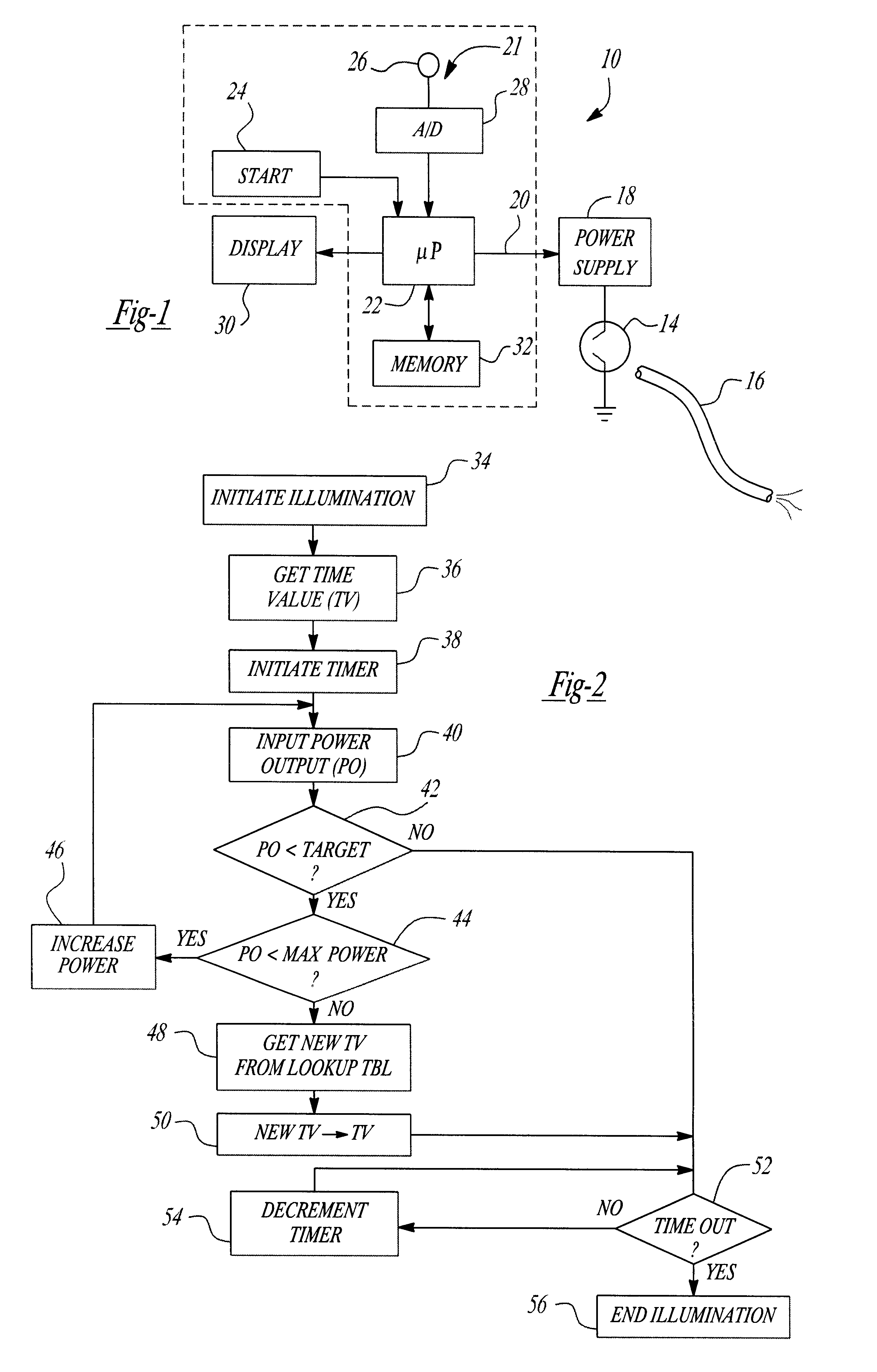Curing system for photohardenable materials
a technology of photohardenable materials and cure systems, which is applied in the direction of process and machine control, optical radiation measurement, instruments, etc., can solve the problems of insufficient cure of photohardenable materials, light degradation over a period of time, and cos
- Summary
- Abstract
- Description
- Claims
- Application Information
AI Technical Summary
Benefits of technology
Problems solved by technology
Method used
Image
Examples
Embodiment Construction
With reference first to FIG. 1, a block diagrammatic view of the curing system 10 of the present invention is there shown. The curing system 10 includes a light source 14. Preferably, the light source 14 is a xenon arc light although other types of lights, such as a halogen light, may alternatively be used. Furthermore, any conventional delivery system, such as a fiberoptic 16, can be used to deliver the light output from the light source 14 to a target site.
A variable power output power supply 18 is electrically connected to the light source 14 so that, upon activation of the system 10, the power supply 18 provides electrical power to the light source 14 thus illuminating the light source 14. The power supply 18 is capable of providing a variable power up to a preset maximum amount in dependence upon a control signal on an input line 20 to the power supply 18. Typically, the power output from the power supply 18 varies as a function of the voltage value on its input line 20. Furthe...
PUM
 Login to View More
Login to View More Abstract
Description
Claims
Application Information
 Login to View More
Login to View More - R&D
- Intellectual Property
- Life Sciences
- Materials
- Tech Scout
- Unparalleled Data Quality
- Higher Quality Content
- 60% Fewer Hallucinations
Browse by: Latest US Patents, China's latest patents, Technical Efficacy Thesaurus, Application Domain, Technology Topic, Popular Technical Reports.
© 2025 PatSnap. All rights reserved.Legal|Privacy policy|Modern Slavery Act Transparency Statement|Sitemap|About US| Contact US: help@patsnap.com


